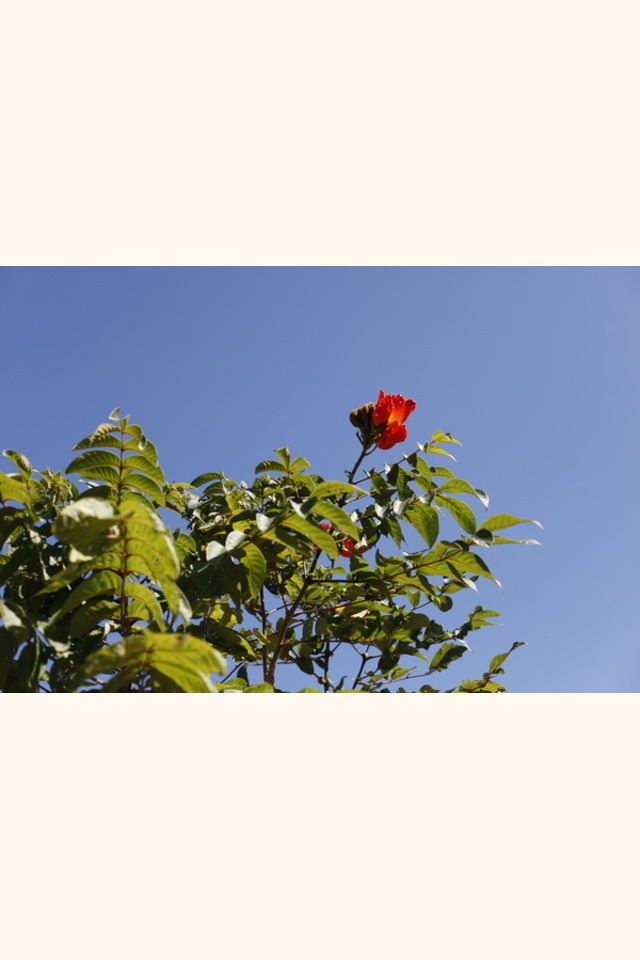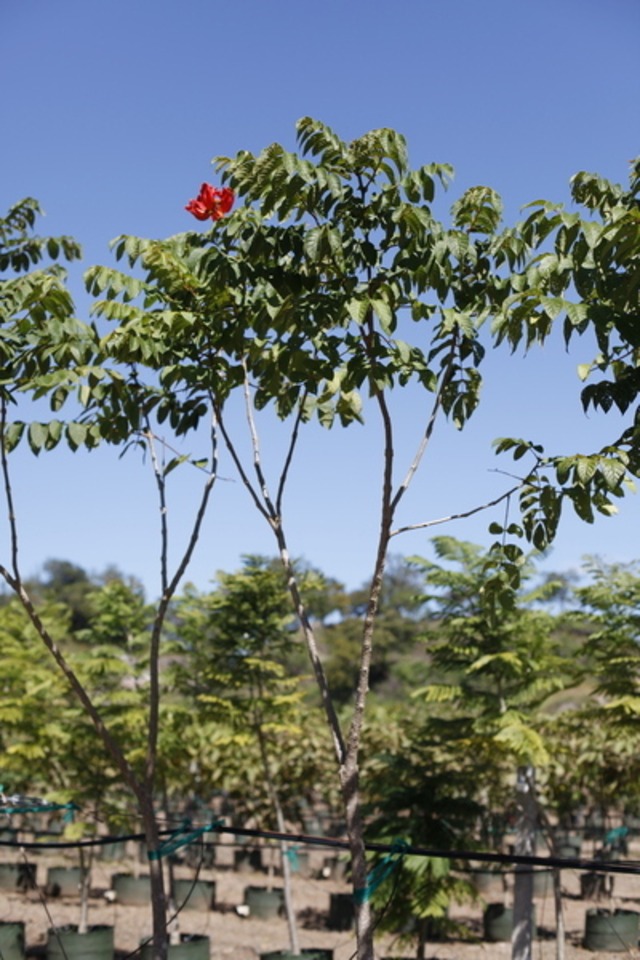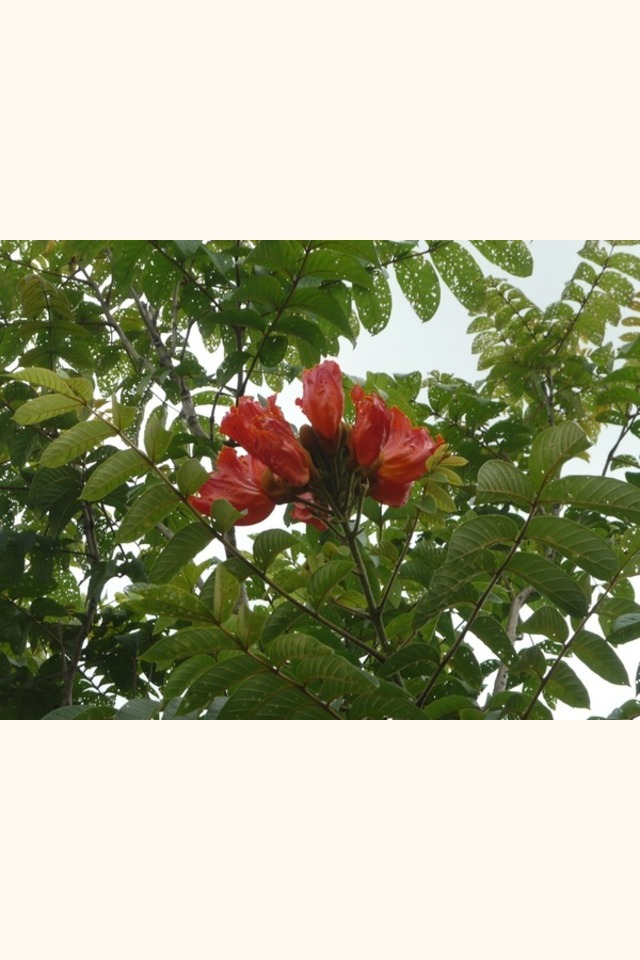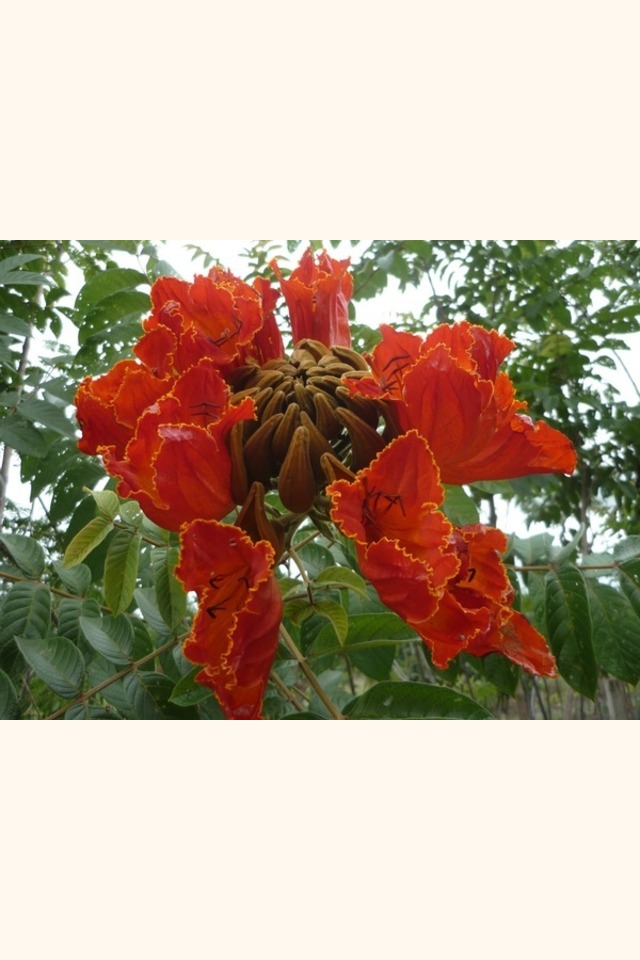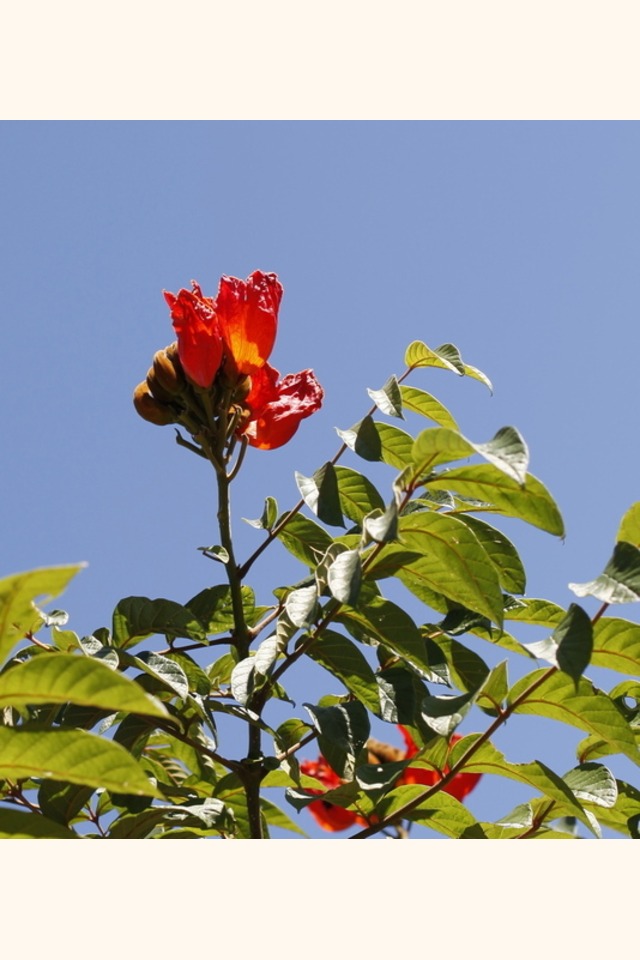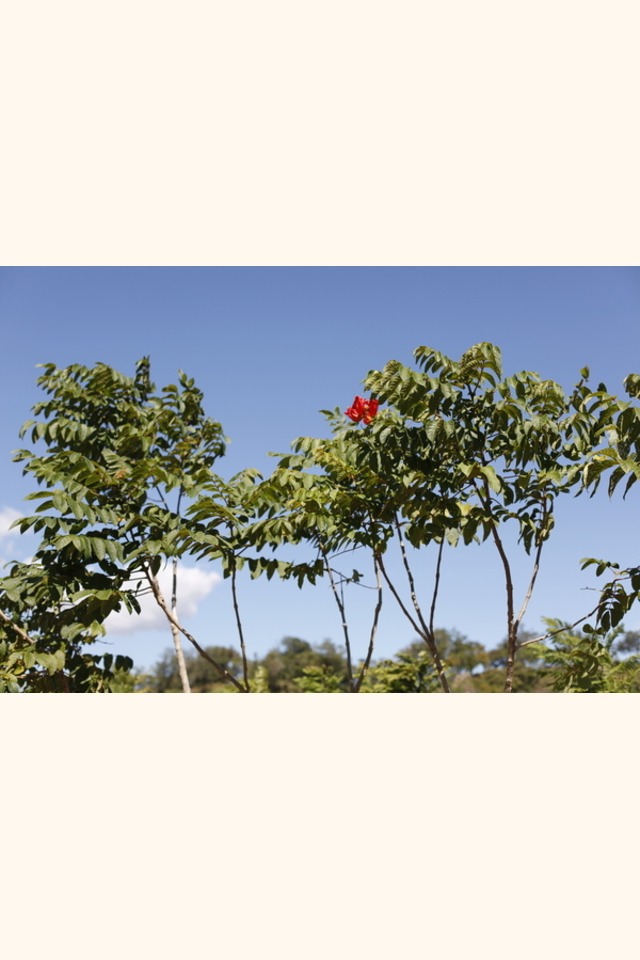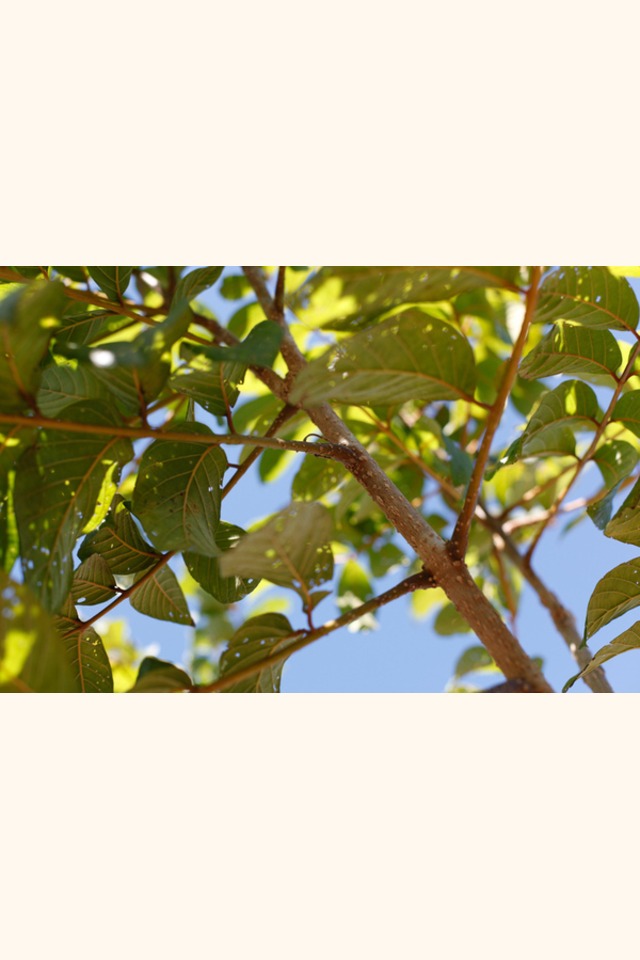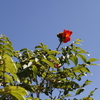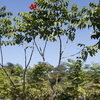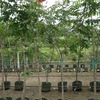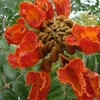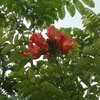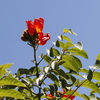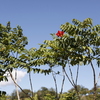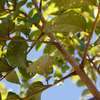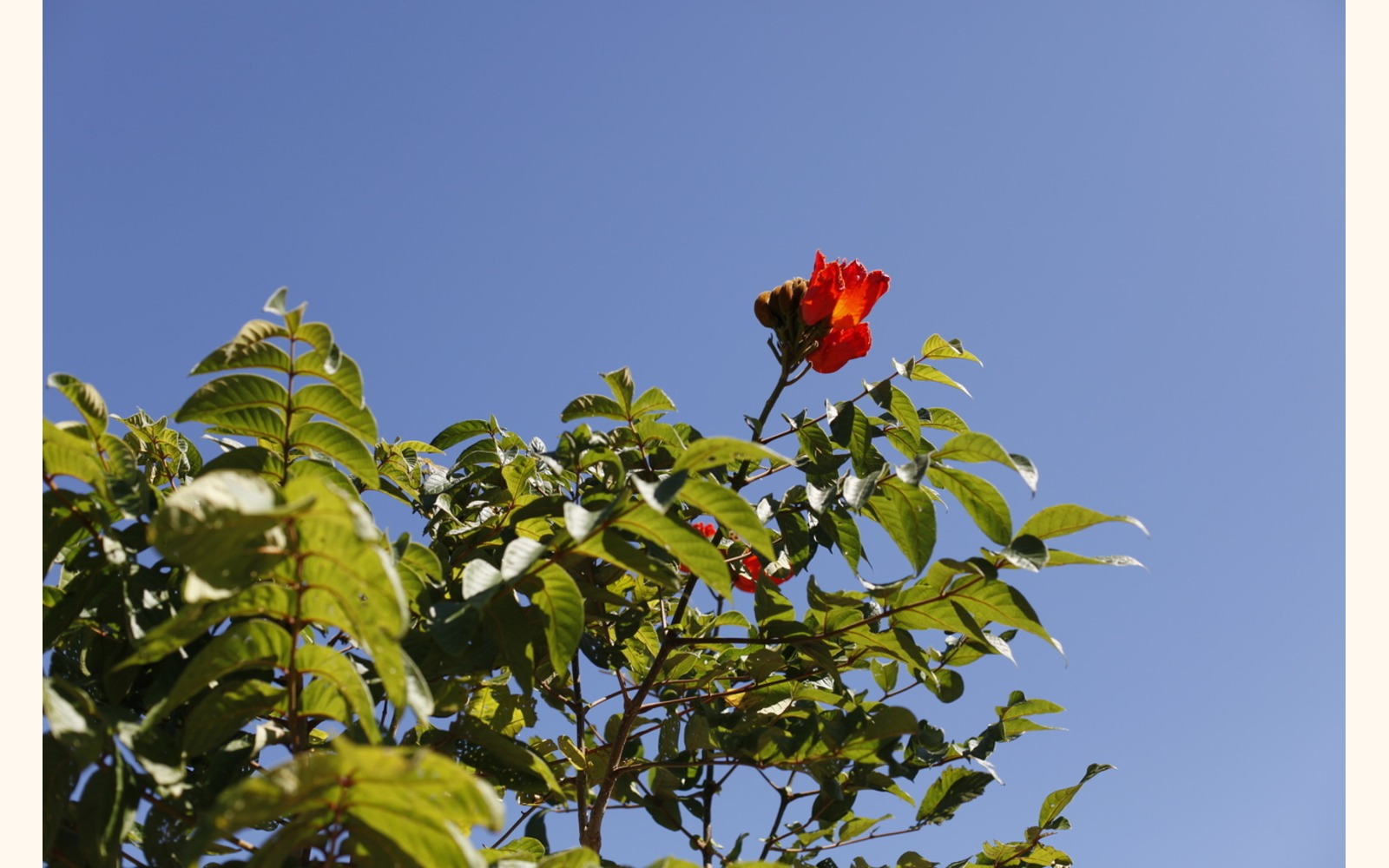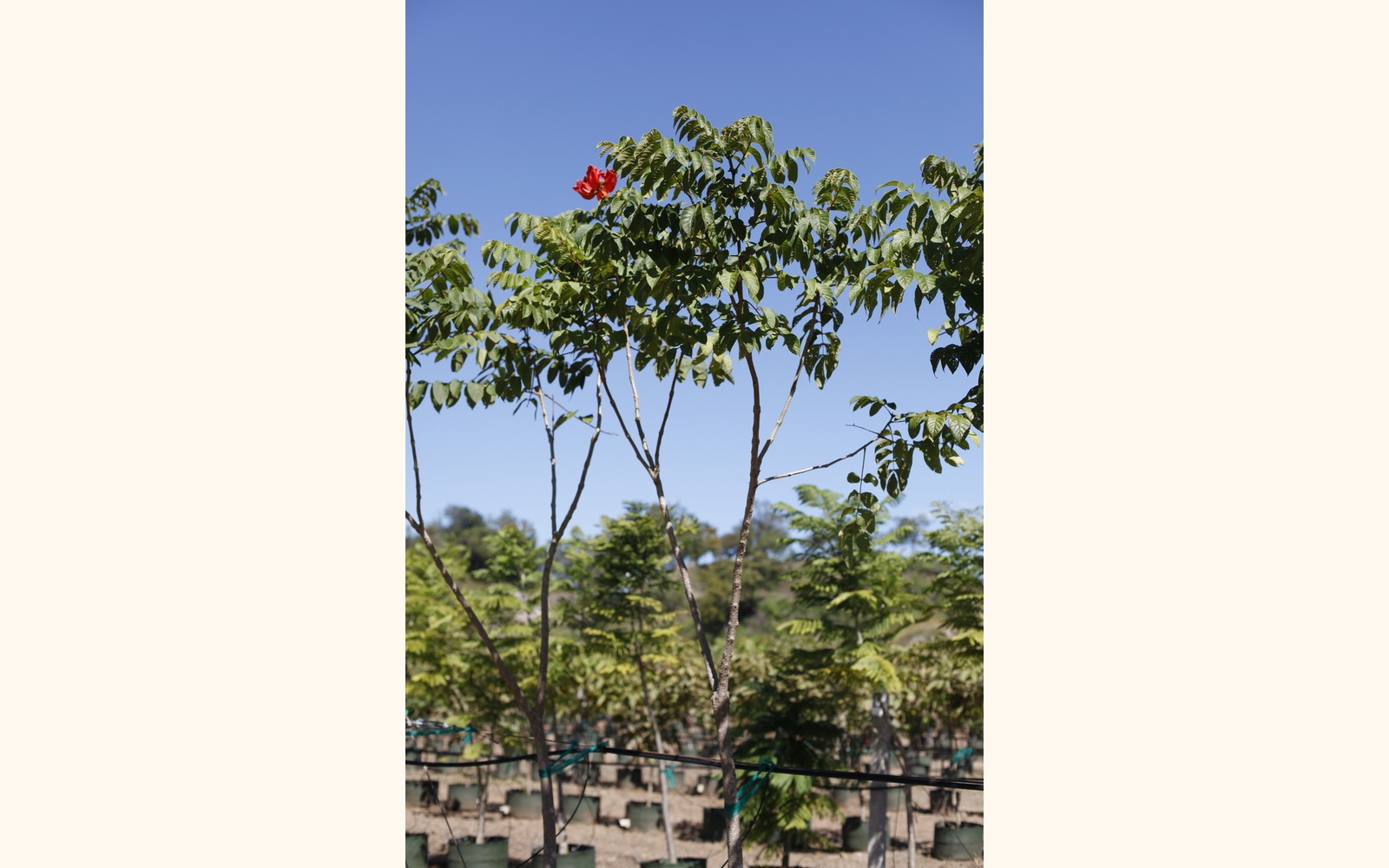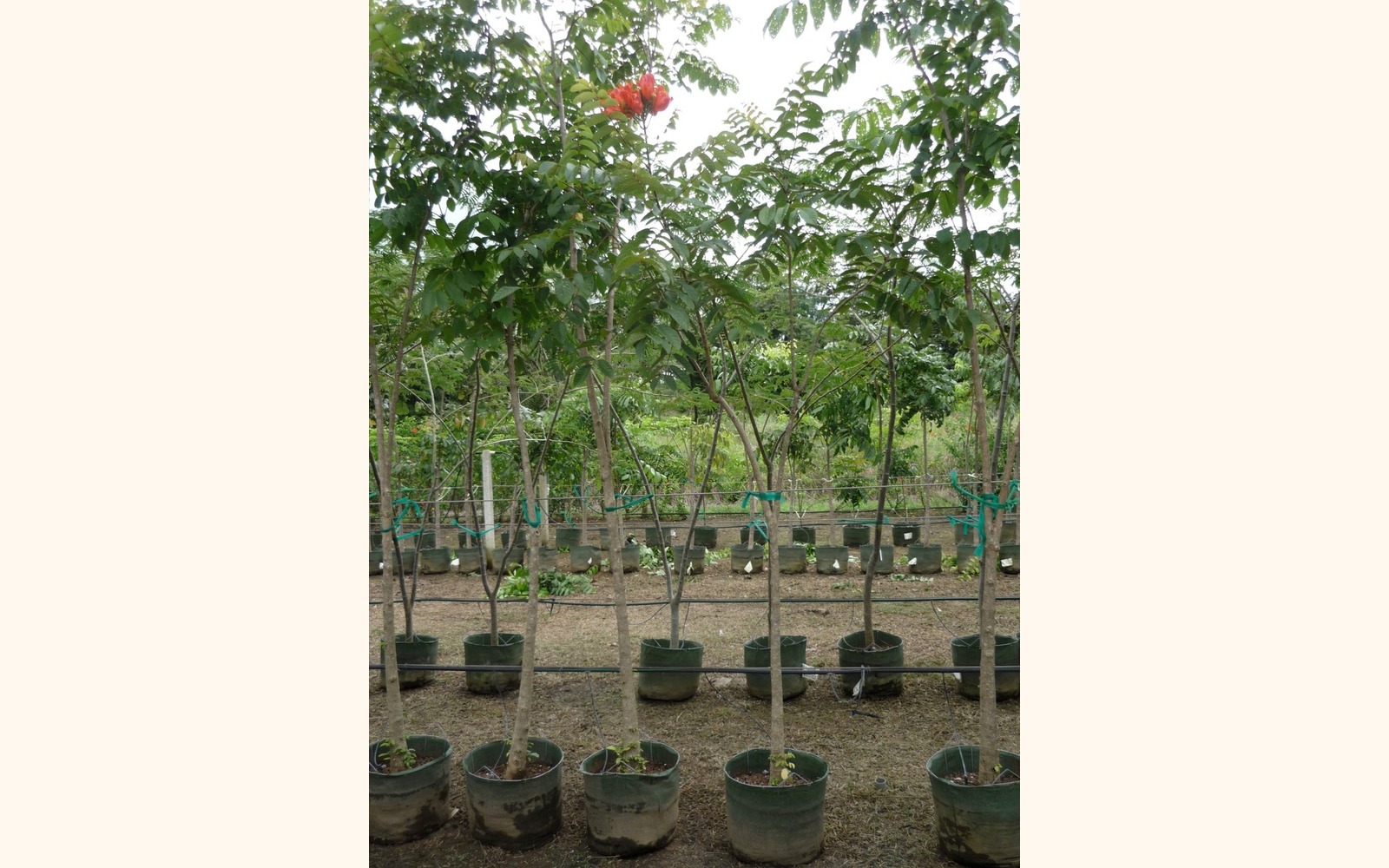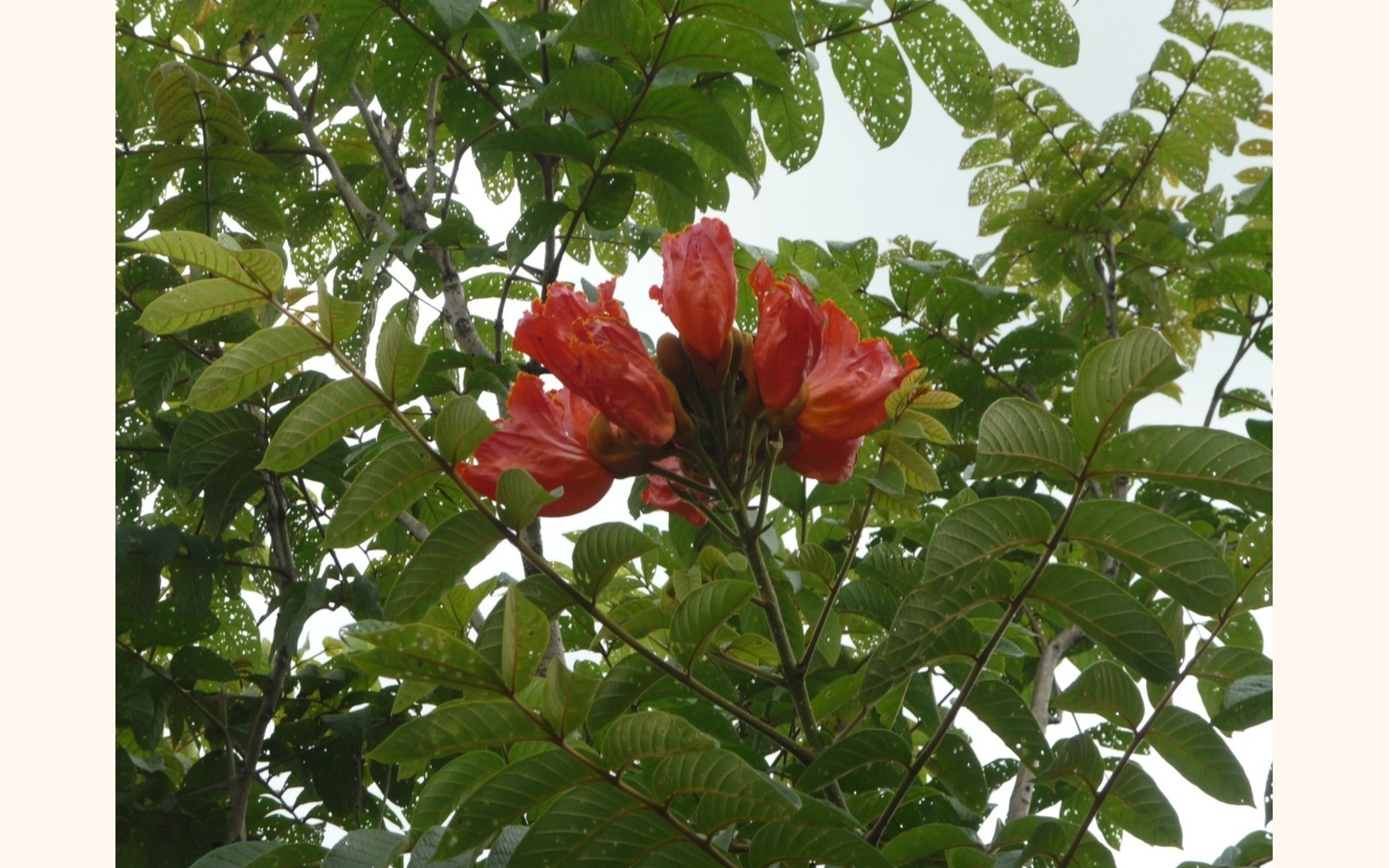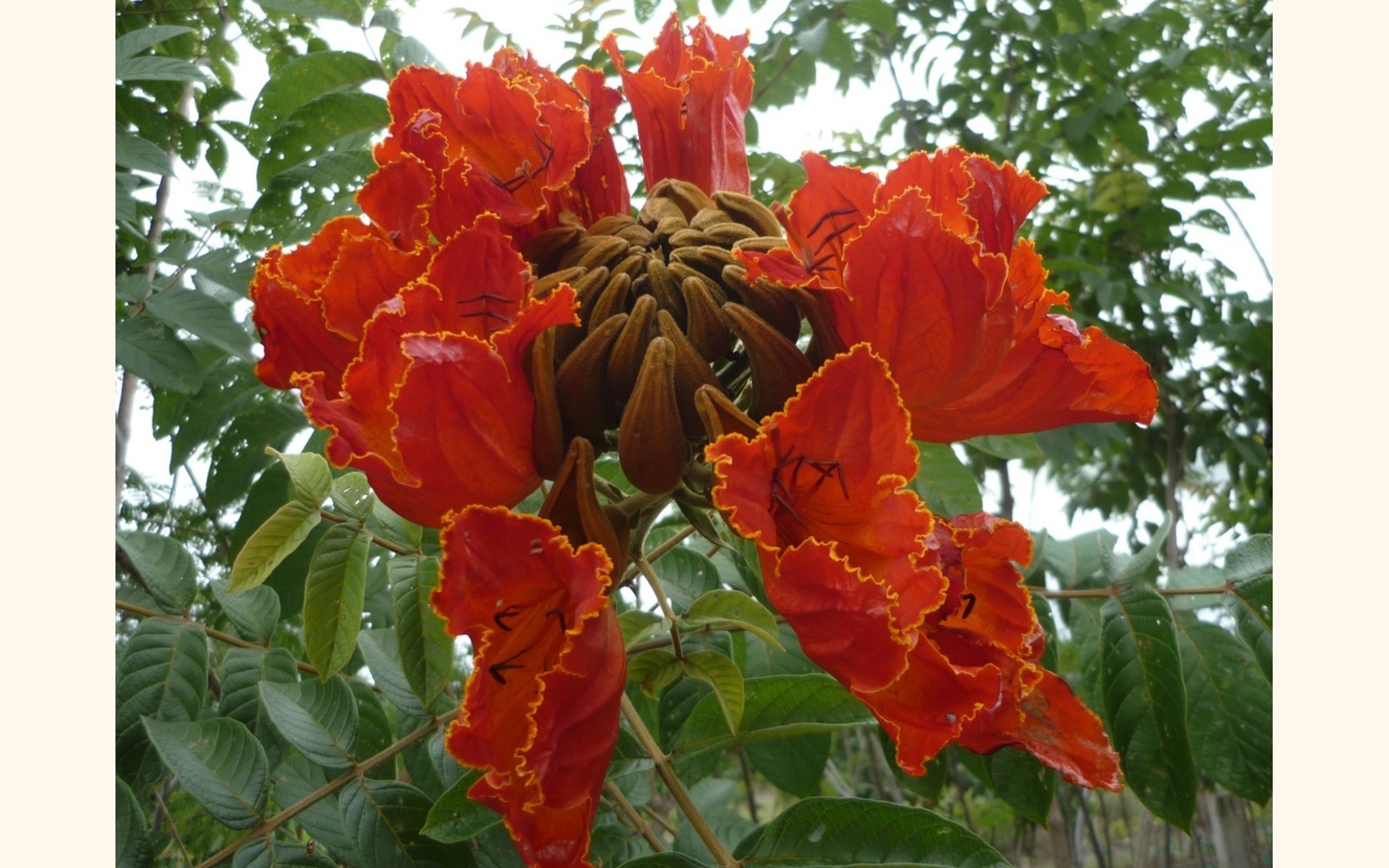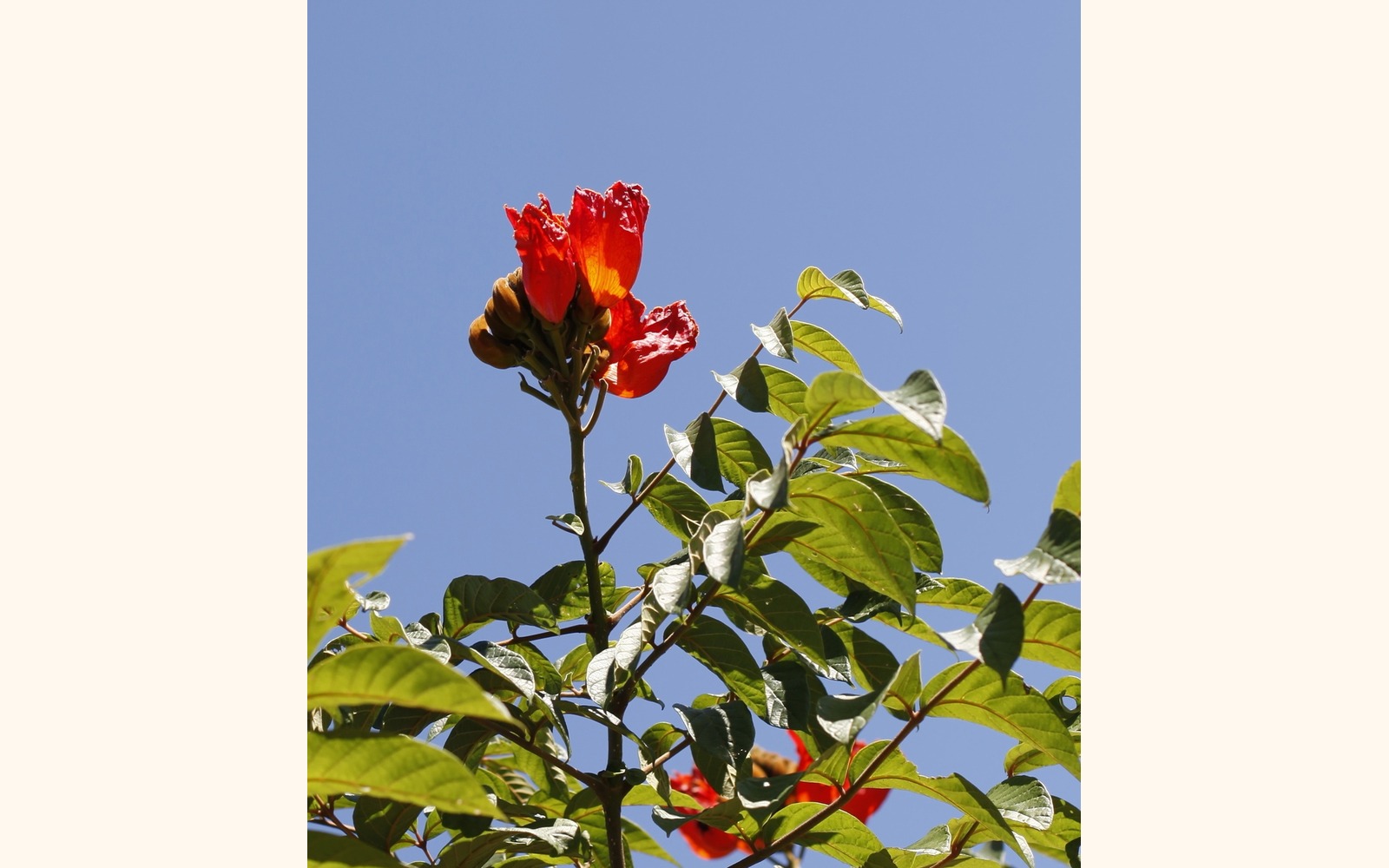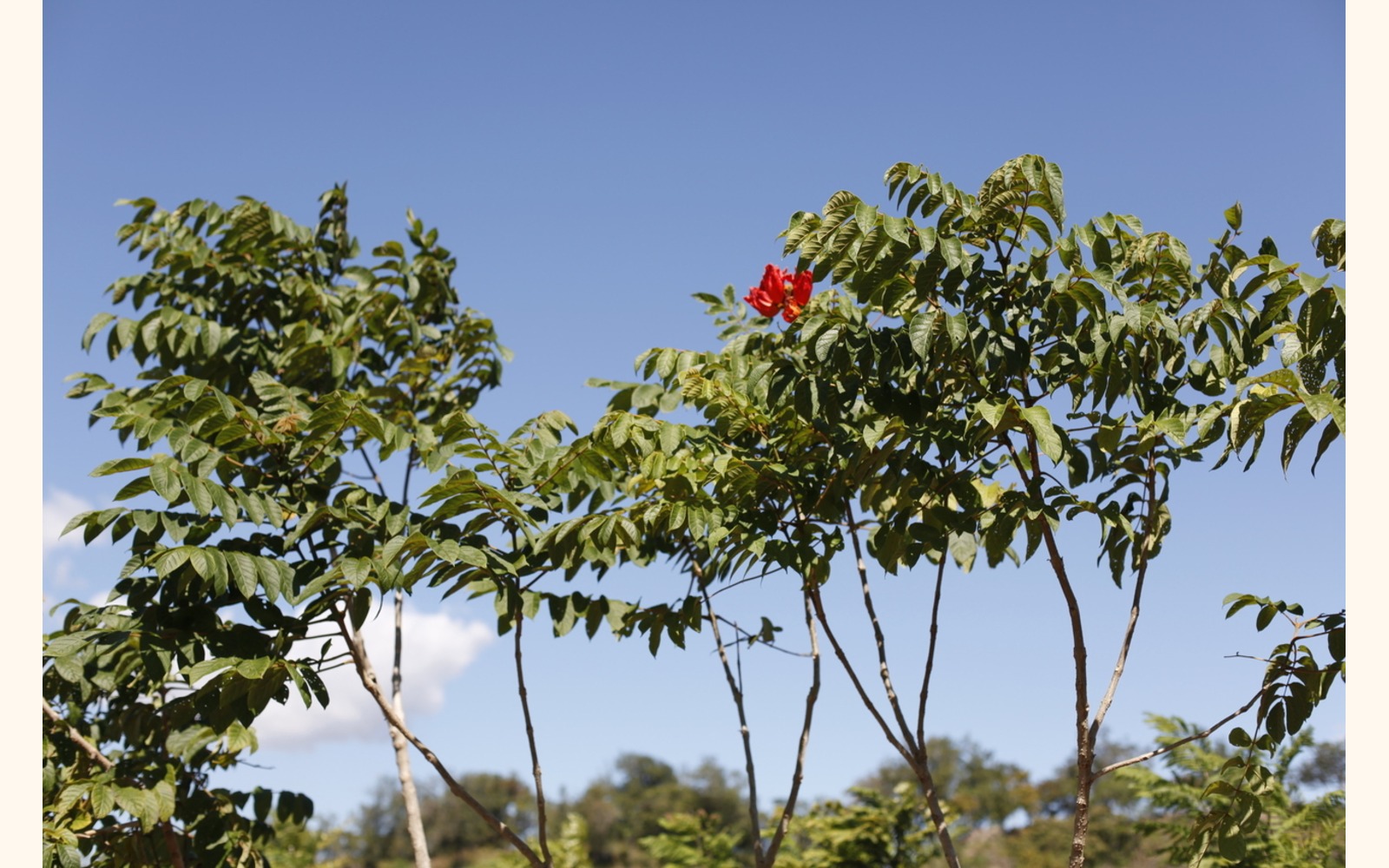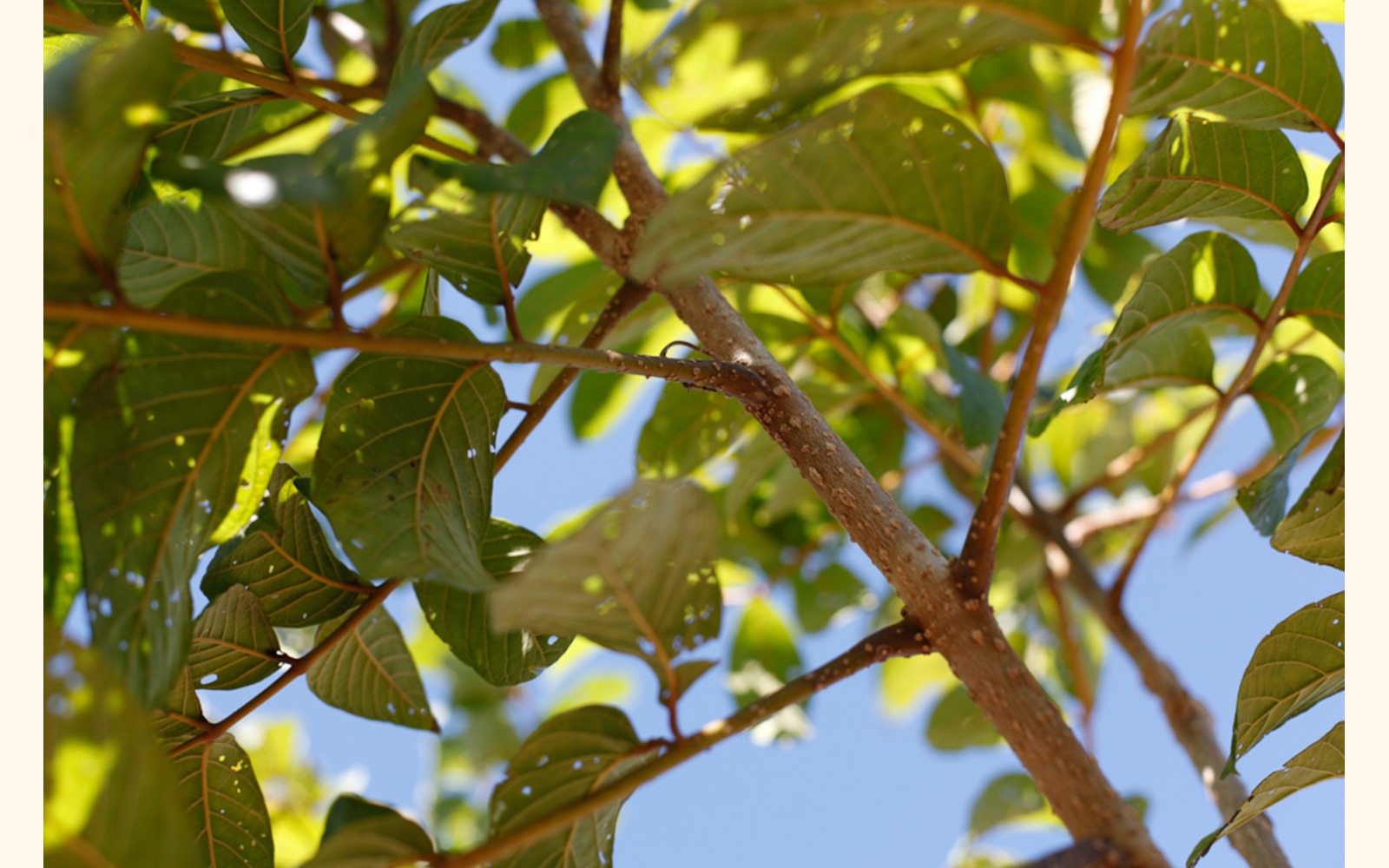
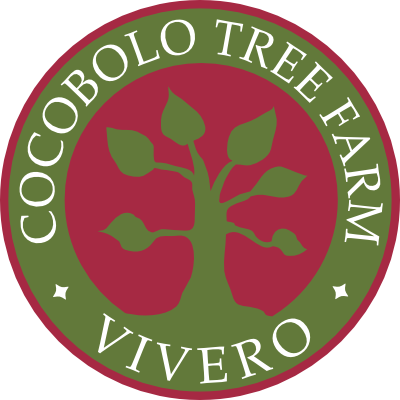
Plants > Ornamental & Shade Trees > African Tulip Tree, Fountain tree
African Tulip Tree, Fountain tree , Llama del bosque
Spathodea is a monotypic genus in the flowering plant family Bignoniaceae. The single species it contains, Spathodea campanulata, is commonly known as the Fountain Tree, African Tulip Tree,Pichkari or Nandi Flame. The tree grows between 7–25 m (23–82 ft) tall and is native to tropical dry forests of Africa.
This tree is planted extensively as an ornamental tree throughout the tropics and is much appreciated for its very showy reddish-orange flowers. Hummingbirds love the nectar from this flower. the wood is soft enough that wood It is used as a nesting place for wood nest building birds.
Products
- As Food: The seeds are edible and used in many parts of Africa.
- As Timber: In its original habitat, the soft, light brownish-white wood is used for carving and making drums.
- As Poison: The hard central portion of the fruit is used to kill animals.
- As Medicine: The bark has laxative and antiseptic properties, and the seeds, flowers and roots are used as medicine. The bark is chewed and sprayed over swollen cheeks. The bark may also be boiled in water used for bathing newly born babies to heal body rashes.
- As many children raised in the tropics know, the blossoms of the African tulip tree are not only pretty but entertaining. Every flower bud is pressurized with a watery nectar as it expands; if you squeeze the buds just right, they make an effective water pistol that can be accurate up to ten feet away. As a bonus, the frilly flowers, when fully open, make colorful hanky-like pocket ornaments - See more at: http://www.pacifichorticulture.org/articles/african-tulip-tree-2/#sthash.0vaINN4r.dpuf
Plant Characteristics
- Height: 23 to 80 M
Additional Information
References
https://en.wikipedia.org/wiki/Spathodea
?http://www.pacifichorticulture.org/articles/african-tulip-tree-2/
Precautions
It has become an invasive species in Australia although we have not witnessed it as an issue here. It is usually seen here as a solo tree in the landscape.









